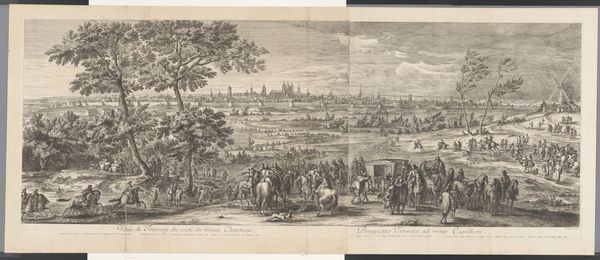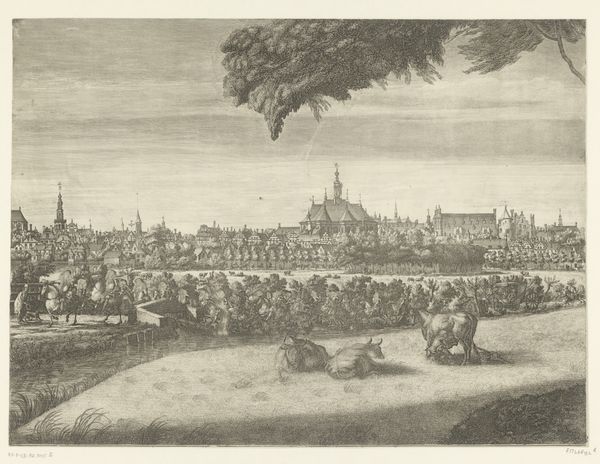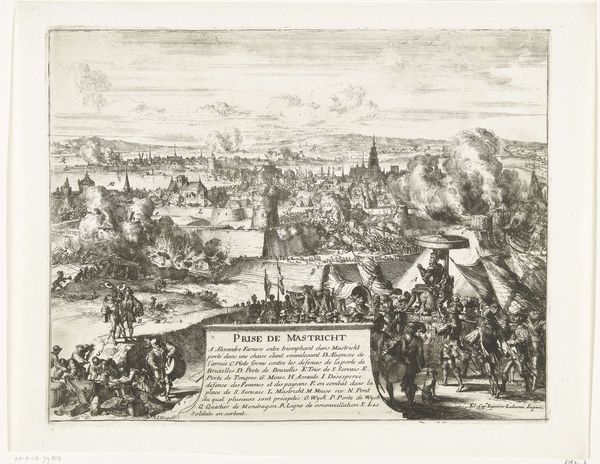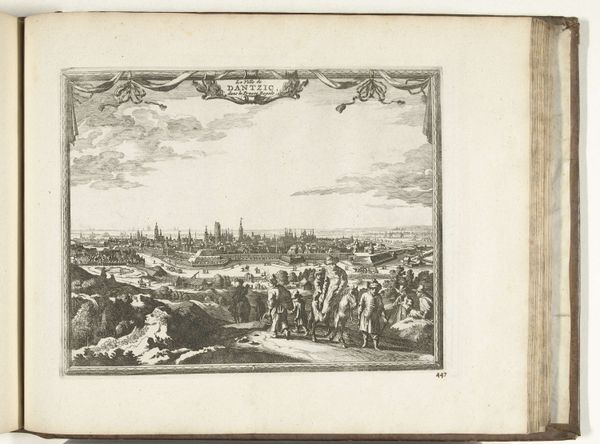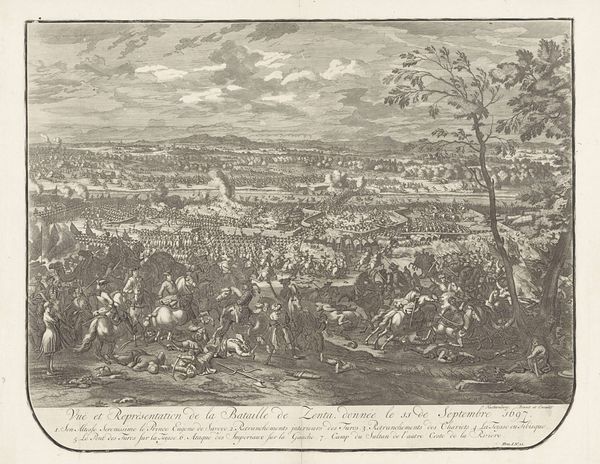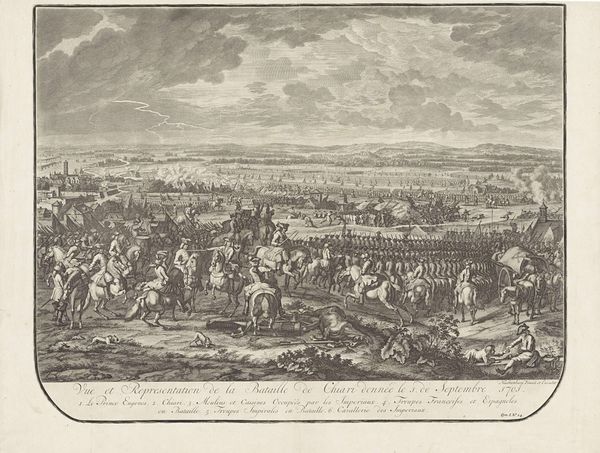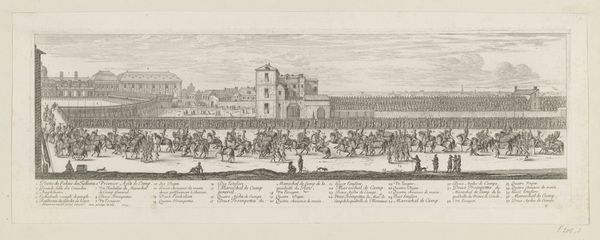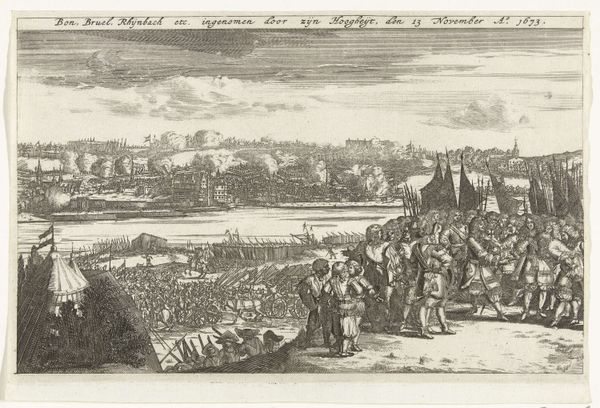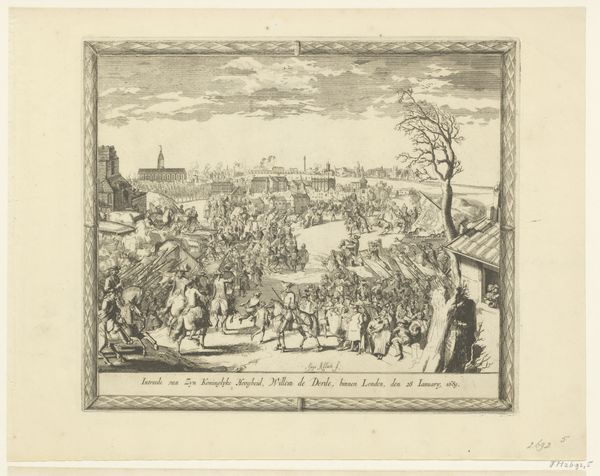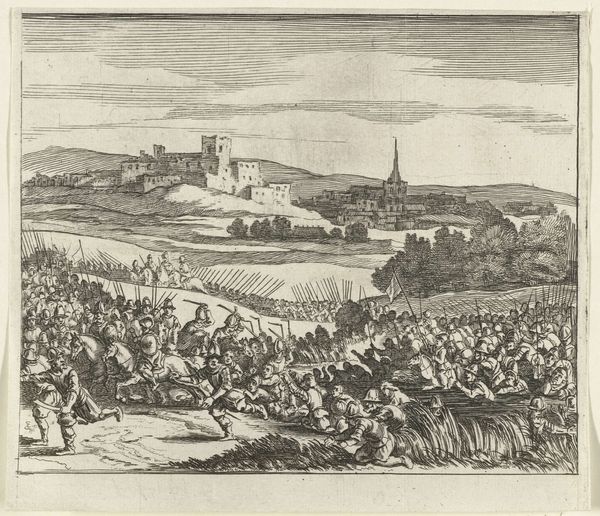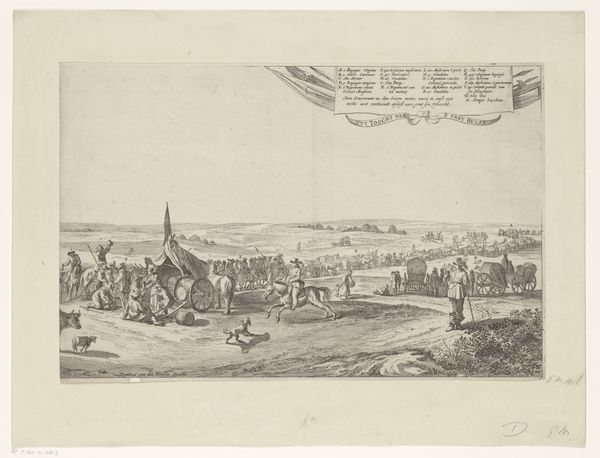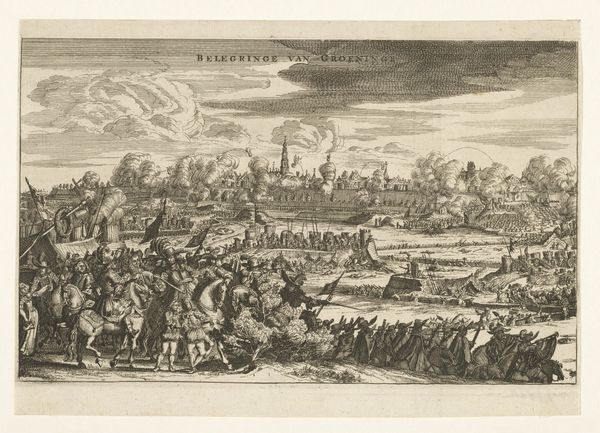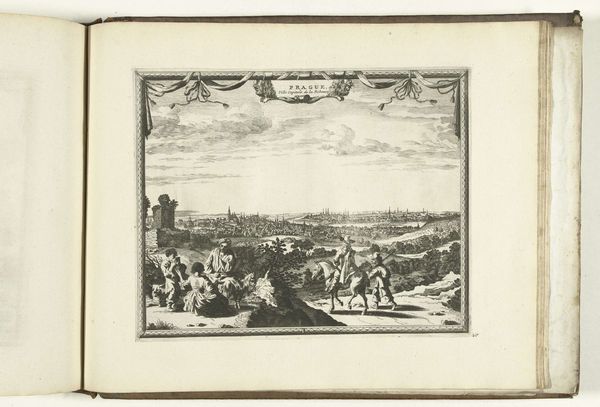
Belegering en verovering van Naarden door de Prins van Oranje, 1673 1676
0:00
0:00
print, engraving
#
baroque
# print
#
old engraving style
#
cityscape
#
history-painting
#
engraving
Dimensions: height 172 mm, width 268 mm
Copyright: Rijks Museum: Open Domain
Editor: So, this is "Belegering en verovering van Naarden door de Prins van Oranje, 1673," an engraving from 1676 by an anonymous artist, currently housed in the Rijksmuseum. It’s pretty striking, the detail achieved just through engraving! The overall feeling I get is one of calculated power, and a slightly chaotic conflict… what are your first impressions? Curator: What I immediately see are layers upon layers of symbolic meaning embedded within this scene. A cityscape under siege isn't just a record of an event; it speaks to anxieties about civic order, about the fragility of even the most fortified spaces. The plumes of smoke act almost like dark halos. What emotions are stirred by this event being meticulously depicted three years later? Editor: The plumes of smoke… yes, quite menacing and imposing… Do you think there’s a glorification of warfare present, or a cautionary element in this depiction? Curator: Both, simultaneously, and intentionally. Baroque art often grapples with duality. Look at how Prince of Orange is presented on horseback, but amidst devastation. He's both a conquering hero *and* a harbinger of destruction. Think about the intended audience – what memories would *they* associate with the siege of Naarden? Editor: So, depending on the viewer's experiences or background, this image would evoke completely different responses. Curator: Exactly. Visual symbols are never neutral. Consider how the artist positions the church steeple; a subtle comment on the role of faith amidst conflict? What might the city represent as a symbol, psychologically speaking? Editor: That’s a really great point about how symbols evolve, and are shaped by our cultural understanding of them. This makes me consider conflict in a totally different way, looking beyond simply face-value interpretation. Curator: Precisely, understanding an artwork is like uncovering layers of cultural memory.
Comments
No comments
Be the first to comment and join the conversation on the ultimate creative platform.
